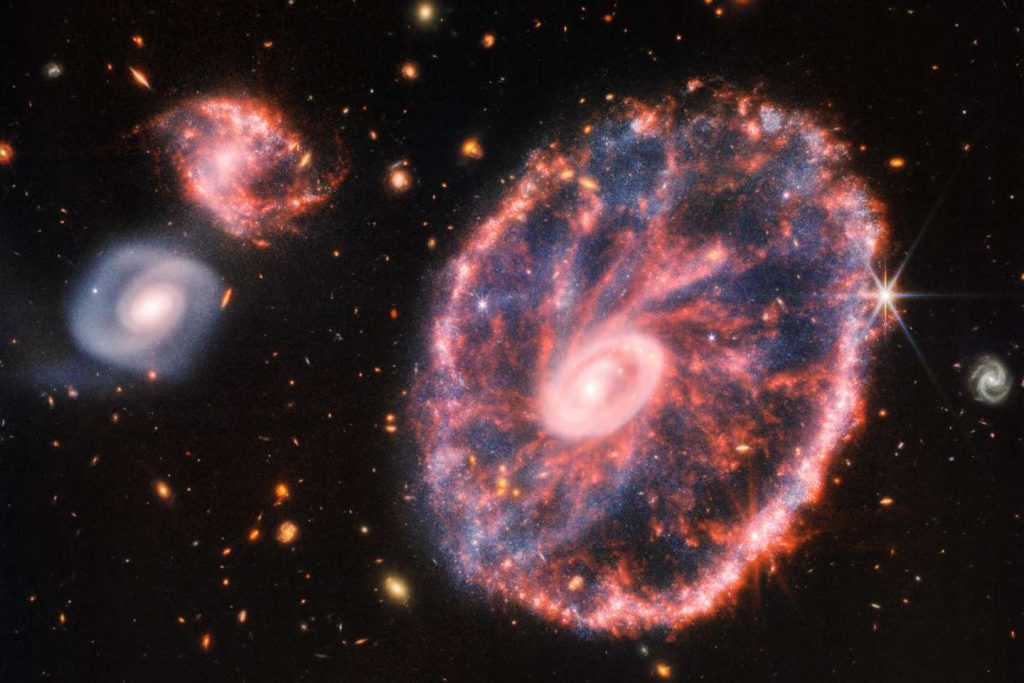
The James Webb Telescope reveals a stunning image of the Kartwell Wheel Galaxy

On Tuesday, August 2, NASA released a rare and stunning image of a galaxy 500 million light-years away, the Cartwheel Galaxy, whose rings appear in unprecedented clarity thanks to the new telescope, the James Webb Space.
Astronomers, like our Milky Way, believe that the Cartwell Wheel Galaxy was once a spiral galaxy. But an astonishing event gave it its shape: the collision with another, smaller galaxy (not visible in the photo). Then two rings formed from the center of the collision, similar to ripples in concentric circles caused by a pebble being thrown into the water. This is what earned it its evocative name.
The first ring, in the middle, is very bright, and the second, outside, has been expanding for 440 million years. As it expands, the ring collides with surrounding gas, resulting in star formation.
The Cartwell wheel galaxy is still in a state “transient”NASA said in its statement. If the James Webb Telescope “It provides us with insight [son] It also gives us an idea of what happened to it in the past, and how it will develop in the future.”.
engineering gem
This galaxy has already been observed by the Hubble Space Telescope, but the infrared capabilities of James Webb reveal new details hidden so far, allowing a large amount of dust to be seen through it. The composite image, taken from observations by two scientific instruments of the telescope, also shows two other small galaxies, as well as several other galaxies in the background.
A $10 billion engineering gem, the James Webb Telescope launched from Kourou, French Guiana, last december. It is now 1.5 million kilometers from Earth.
This telescope is named in honor of James Edwin Webb, the second administrator of NASA (1961-1968), a About a hundred times more sensitive from its predecessor, Hubble. Imagined by NASA since the launch of Hubble in 1990 and built from 2004, in cooperation with the European Space Agency (ESA) and Canada (CSA), the James-Webb telescope is equipped with a 6.5-meter mirror, giving it a surface and therefore a sensitivity seven times greater than its predecessor. . Large enough to detect the heat signature of a bee on the moon’s surface.
Another difference from the previous one: the method of observation. Where Hubble observes space mainly in the visible light field, James Webb ventures into the wavelength beyond the eye: the near and mid-infrared. Radiation that any object, star, human or flower emits naturally.
Its accuracy will make it possible to better understand the formation of stars and galaxies and to observe exoplanets, of which astronomers are always discovering more samples, trying to identify, perhaps one day, other planets that harbor life.

“Incurable web evangelist. Hipster-friendly gamer. Award-winning entrepreneur. Falls down a lot.”
